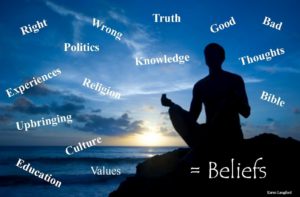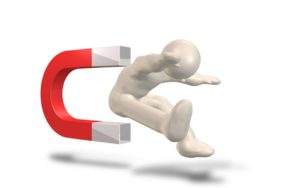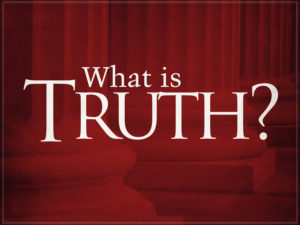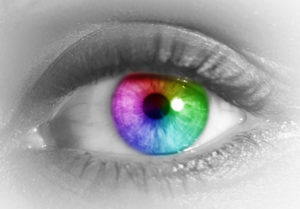- You are here:
- Home »
- Blog »
- Internal Map of Reality (General Articles) »
- Exploring Your Internal Map Of Reality Part 2 – Beliefs (Part 1 of 2)
Exploring Your Internal Map Of Reality Part 2 – Beliefs (Part 1 of 2)
 What is a Belief?
What is a Belief?
Basically, a belief is any idea that we hold to be true (even if it isn’t true.) Furthermore, for anyone that holds that belief, it is always true. In your Internal Map Of Reality, a belief can be a generalization, a distortion, or a deletion of our perceived reality. That said, there are 10 principles to understand about our beliefs.
Belief Principle #1
Many beliefs are based on our early life interactions and experiences, especially with our parents or guardians. At this time we all develop beliefs about who we are (our identity) and what our relationship is to the rest of the world. However our beliefs are changeable throughout life.
For instance, if we were poorly treated as a child we might form the belief that we are a bad person, because people around us were telling us so. If our parents were struggling financially when we were young, we could believe that ‘there’s never enough money in the world.’
Belief Principle #2
Beliefs create or attract the results, circumstances and experiences of your life. Regardless of what you believe, you’ll find a way to make your life conform to what you believe.
There are 3 ways that you make things true for yourself.
 You will attract, and be attracted to people and situations that confirm what you believe. For example, if you believe you are unlovable, you’ll attract or be attracted to people who are not able to love you.
You will attract, and be attracted to people and situations that confirm what you believe. For example, if you believe you are unlovable, you’ll attract or be attracted to people who are not able to love you. You’ll find ways to distort what you perceive, so the belief seems true, even if it isn’t. For example, if you believe you are poor, you’ll see poverty in every situation of life, even if it isn’t there.
You’ll find ways to distort what you perceive, so the belief seems true, even if it isn’t. For example, if you believe you are poor, you’ll see poverty in every situation of life, even if it isn’t there. You’ll behave in such a way that people will respond in kind, thus confirming what you believe. For instance, if you believe that that ‘all men are bastards,’ most likely the men you meet will be ‘bastards’ towards you.
You’ll behave in such a way that people will respond in kind, thus confirming what you believe. For instance, if you believe that that ‘all men are bastards,’ most likely the men you meet will be ‘bastards’ towards you.
Belief Principle #3
Significant negative emotional experiences can create beliefs that don’t serve us, which are often called ‘limiting beliefs.’ These can cause us to focus on what we don’t want.
For example, if you were bullied at school, you may have a negative self-belief, such as ‘I’m not worthy’ or ‘I’m not smart enough.’ Both of these are unresourceful, limiting beliefs.
Belief Principle #4
Because a belief is true to the person who believes it, evaluating beliefs based on whether they’re “true” or “false” isn’t helpful.
 I know this statement will clash with those who advocate the ‘Scientific Method.’
I know this statement will clash with those who advocate the ‘Scientific Method.’
Whilst the Scientific Method seeks ‘truth’ through observation, experimentation and replication by others, in the end the process still ends up being a collective belief of what is ‘true.’
In other words there may be a ‘scientific consensus’ established, but that consensus is still a belief.
Belief Principle #5
If you have a belief that doesn’t serve you, the best thing to do is to replace it with one that does serve you. A very effective way to do this is to adopt what is called the “witness posture.”
 What do I mean by this? Well, it means to observe, with awareness, the process of your beliefs creating what happens in your life.
What do I mean by this? Well, it means to observe, with awareness, the process of your beliefs creating what happens in your life.
This may take the form of your inner voice telling you something that doesn’t serve you. Other ways are also possible such as negative emotions such as anger and fear.
Once you become aware of this process as it’s happening, and notice that it doesn’t serve you, then these beliefs will automatically fade away. This is because you can’t do anything that doesn’t serve you when you aware of it.
Take the example where you say things to yourself. I call this little voice ‘mini-me.’ When you become aware of the actual process of your internal dialog, you’ll notice yourself about to say things to yourself before you actually do so.
And if that dialog is self defeating you’ll actually stop yourself saying it and say something more resourceful.
The Trick is How
That said, the trick is to become aware of ‘how’ you’re creating your life through your beliefs.
 It’s easy to ‘know’ (cognitively and intellectually) that you are doing something to create your outcomes.
It’s easy to ‘know’ (cognitively and intellectually) that you are doing something to create your outcomes.
To actually ‘witness’ or ‘observe’ how you’re doing it requires training through such means as meditation and mindfulness.
It is the same process applied by sports people when they practice a move such as a hand pass in football. They observe what they are doing (whilst they are doing it). They also observe the result they get. If they don’t get the result they want, they change what they’re doing.
Please Click Here for part 2 of this article
